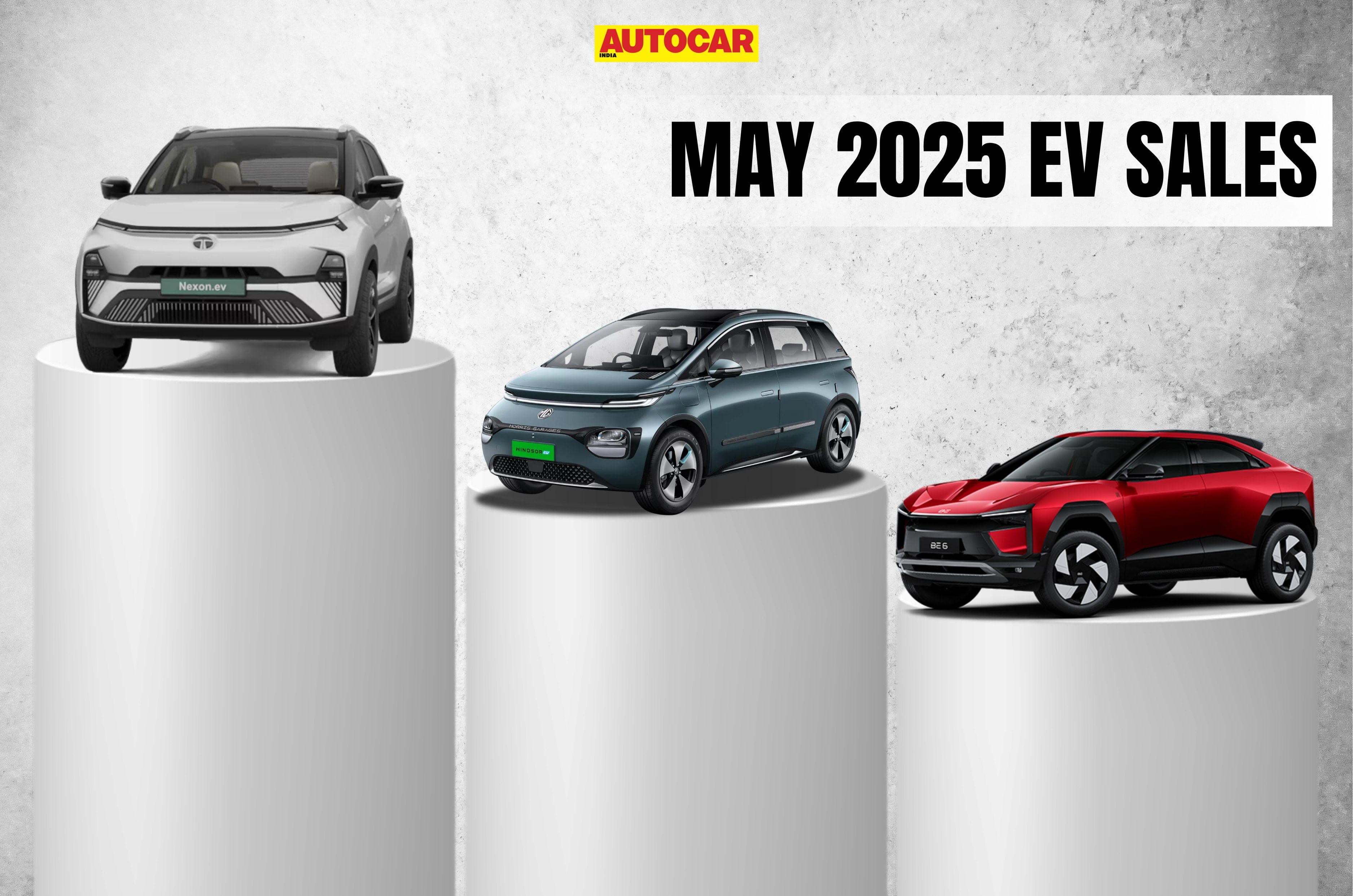India’s electric passenger vehicle segment is witnessing a fierce three-way battle for supremacy as Mahindra and MG Motor India aggressively close the gap with Tata Motors, the long-time market leader. In May 2025, the top three players—Tata Motors, MG Motor, and Mahindra—accounted for a commanding 87.3 percent share of the EV segment, according to vehicle registration data. But the leadership dynamics are shifting rapidly, with Mahindra emerging as the fastest-growing player and MG Motor narrowing Tata’s lead to just 587 units, challenging the established order in a market that grew 52 percent year-on-year last month, with the total amounting to 12197 units.
Tata Motors
Sales: 4319 units, YoY growth: -19 percent
Tata Motors, which once commanded two-thirds of India’s electric PV market, saw its share fall to 35.4 percent in May 2025, down 3,078 basis points from the same month last year. It registered 4,319 units, a 19 percent YoY decline, and dropped 8 percent month-on-month. Its core models, Nexon EV, Tiago EV, and Punch EV, remain popular, but they are facing increasing pressure from newer, fresher alternatives. The new Harrier EV and upcoming Seirra EV will be critical for the current financial year. The market’s rapid expansion and evolving buyer preferences mean Tata’s early-mover advantage is no longer sufficient. Competitors are now matching or exceeding its performance in key metrics such as value, tech appeal, and brand perception.
MG Motor India
Sales: 3,732 units, YoY growth: 147 percent
MG Motor, meanwhile, delivered 3,732 EVs in May—a 147 percent increase over the same month last year—boosting its market share to 30.6 percent, up 1,178 basis points. The Comet and ZS EV continue to attract both personal and fleet buyers, but its most significant driving force is the Windsor which continues to gain momentum. In fact, MG even increased its value proposition by introducing a larger battery with greater range last month. It is now Tata’s most immediate rival, coming within striking distance of the top position for the first time since the EV market took off in India.
Mahindra
Sales: 2604 units, YoY growth: 338 percent
Mahindra posted a whopping 338 percent YoY jump in May 2025, registering 2,604 units, up from just 594 units a year ago, according to the Vahan portal. Its market share has now climbed to 21.3 percent, up 1,394 basis points, making it the third-largest EV player in the country, taking over from Hyundai. Mahindra’s rise is driven by growing traction for its new BE 6 and XEV 9E born EVs, and both models are gaining strong retail visibility and customer acceptance. Just over two months after crossing 3,000 deliveries in April, Mahindra has announced that it has delivered 10,000 units of its electric SUVs since deliveries began on March 20, 2025.
Hyundai
Sales: 609 units, YoY growth: 491 percent
The launch of the Creta Electric in January this year has helped Hyundai move ahead of BYD India in the numbers game. In May 2025, the Creta Electric and the Ioniq 5 together sold 609 units, up 491 percent YoY, albeit on a low year-ago base of 103 units. While the Creta remains Hyundai’s best-selling model and is also India’s best-selling midsize SUV, the Creta Electric has received a very lukewarm response despite its competitive price and positioning. Hyundai expected to see four-digit monthly sales numbers with the Creta Electric, although with the Creta Electric’s entry, Hyundai’s EV market share has risen to 5 percent from 1 percent a year ago.
BYD India
Sales: 494 units, YoY growth: 179 percent
BYD India, the local arm of China’s and the world’s largest EV manufacturer, is beginning to slowly but steadily gain traction in India. BYD, with its four-model strong portfolio, sold 494 units in May 2025, up 179 percent YoY, making it the company’s best month ever since the Chinese OEM began sales in India. This is despite the company having a very limited retail presence, operating only in major Tier 1 cities, and relying completely on fully imported models. They are, however, quite attractively priced for what they offer, and niche EV buyers are certainly seeing the value in that. In fact, BYD is seeing growing traction from both B2C and B2B verticals.
Other players: Kia and Citroen
Apart from the top five, other EV players in the mass market segment – Kia and Citroen – managed to sell 28 units and 123 units, respectively. That’s a 27 percent YoY growth for Kia, while Citroen managed a 41 percent growth. Both, however, remain fringe players with limited offerings – Kia has the fully imported EV6 and EV9 on sale, while Citroen has the sole eC3 which is primarily popular with fleet buyers.
Luxury EV sales in May 2025
The luxury EVs accounted for 301 units last month, with BMW India leading with 175 units, followed by Mercedes-Benz India (88 units) and Volvo Auto India (33 units). Meanwhile, Audi and Porsche saw sales in single digits – 5 and 1, respectively.
Also See:


